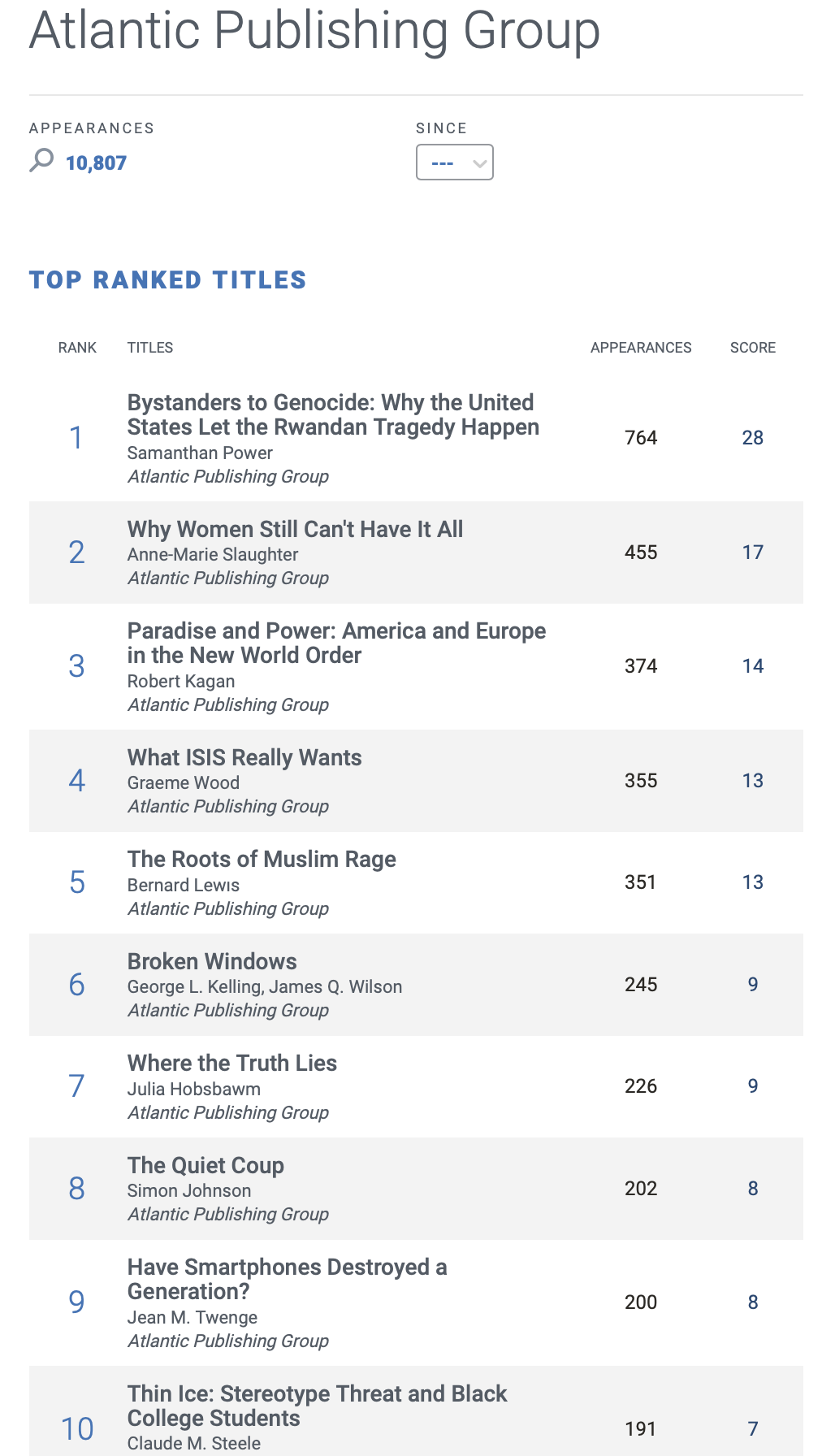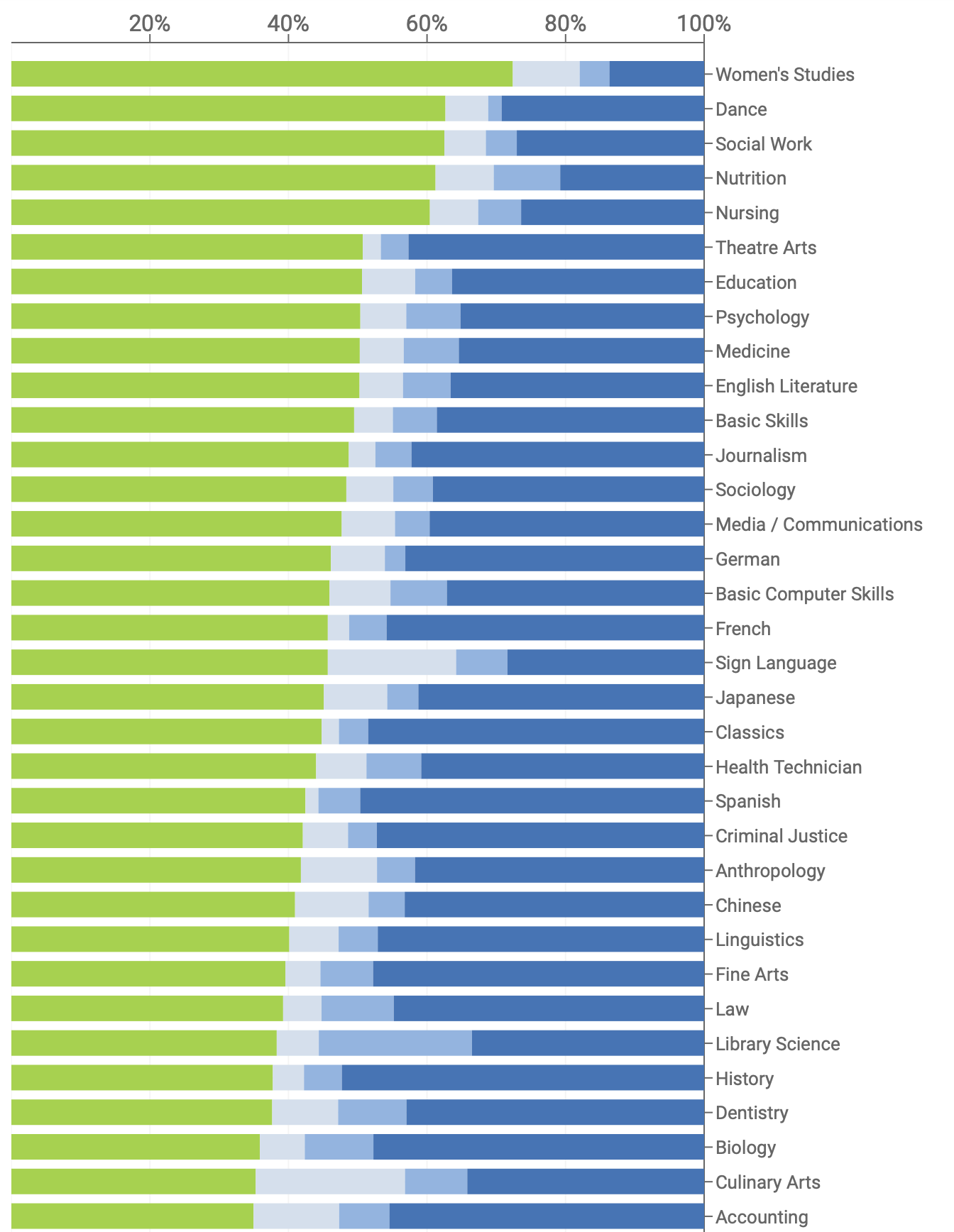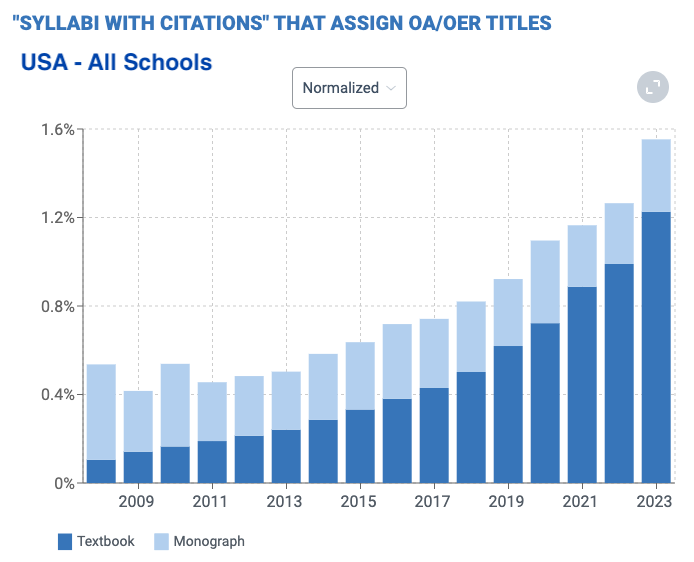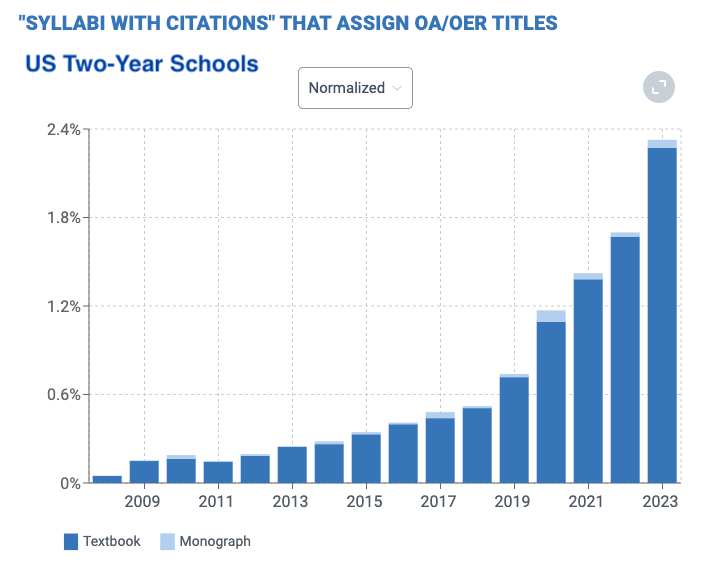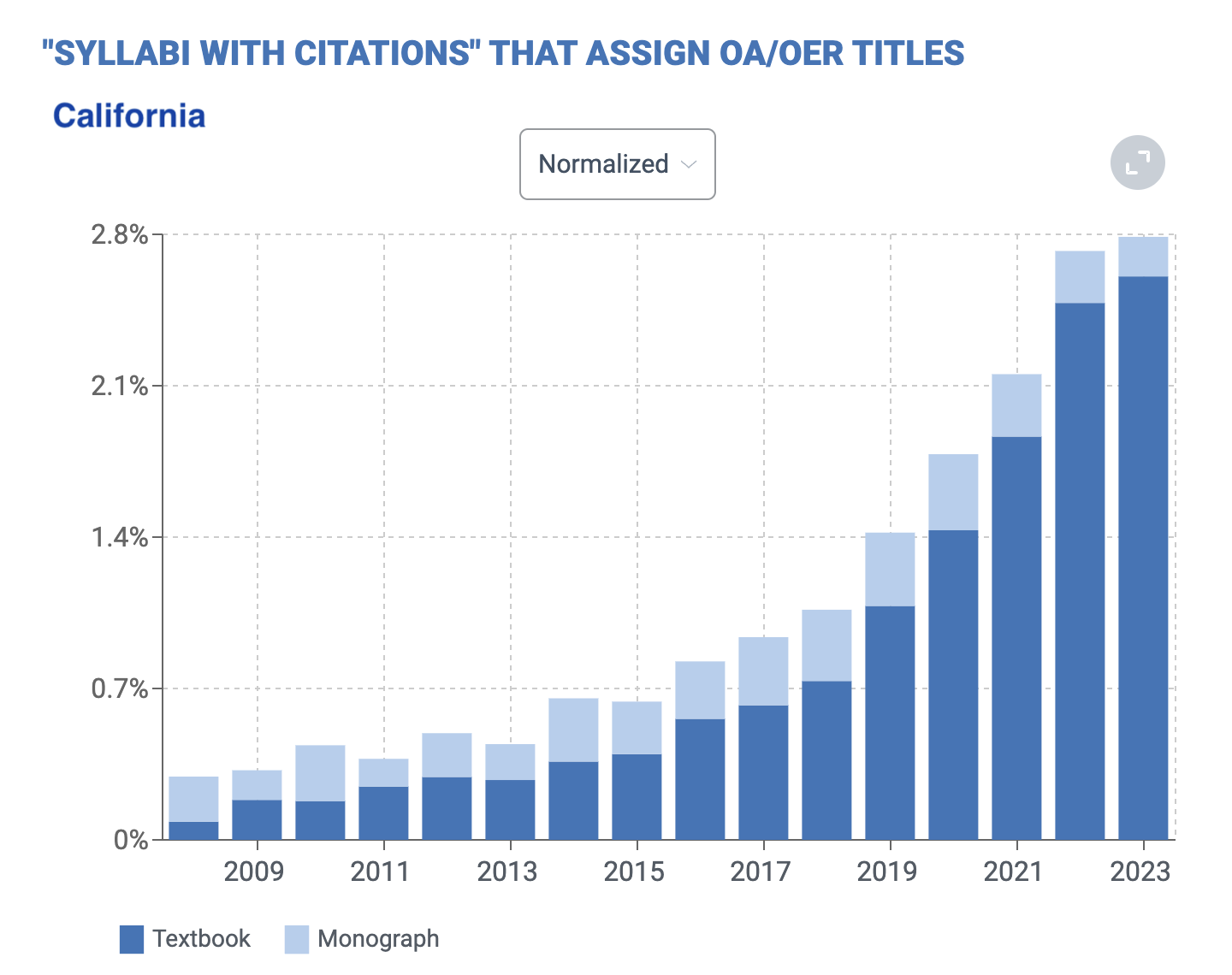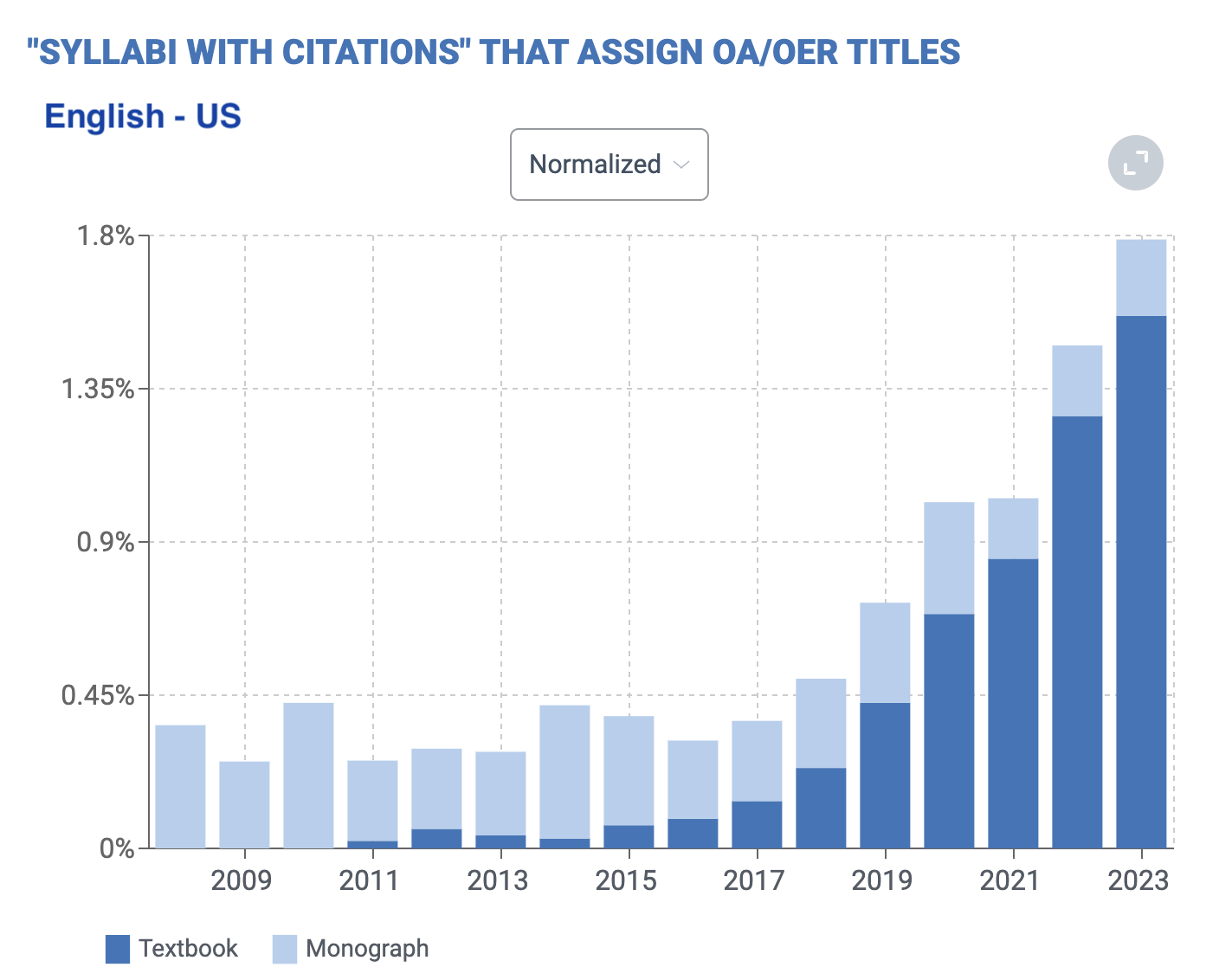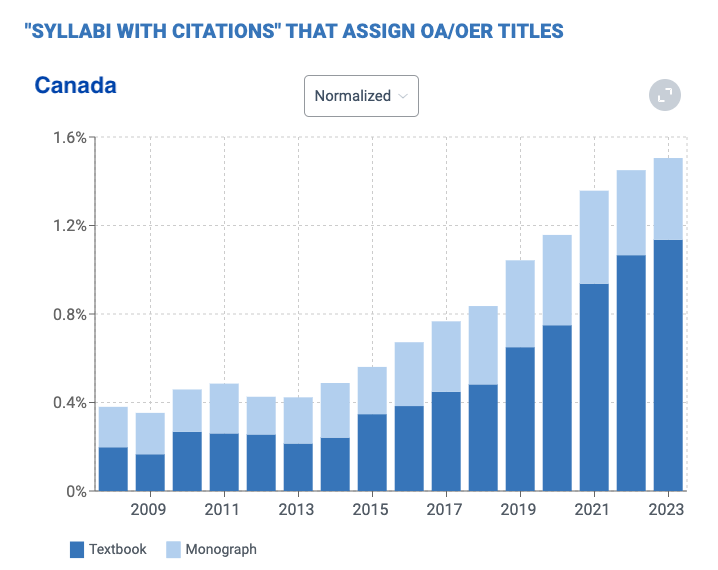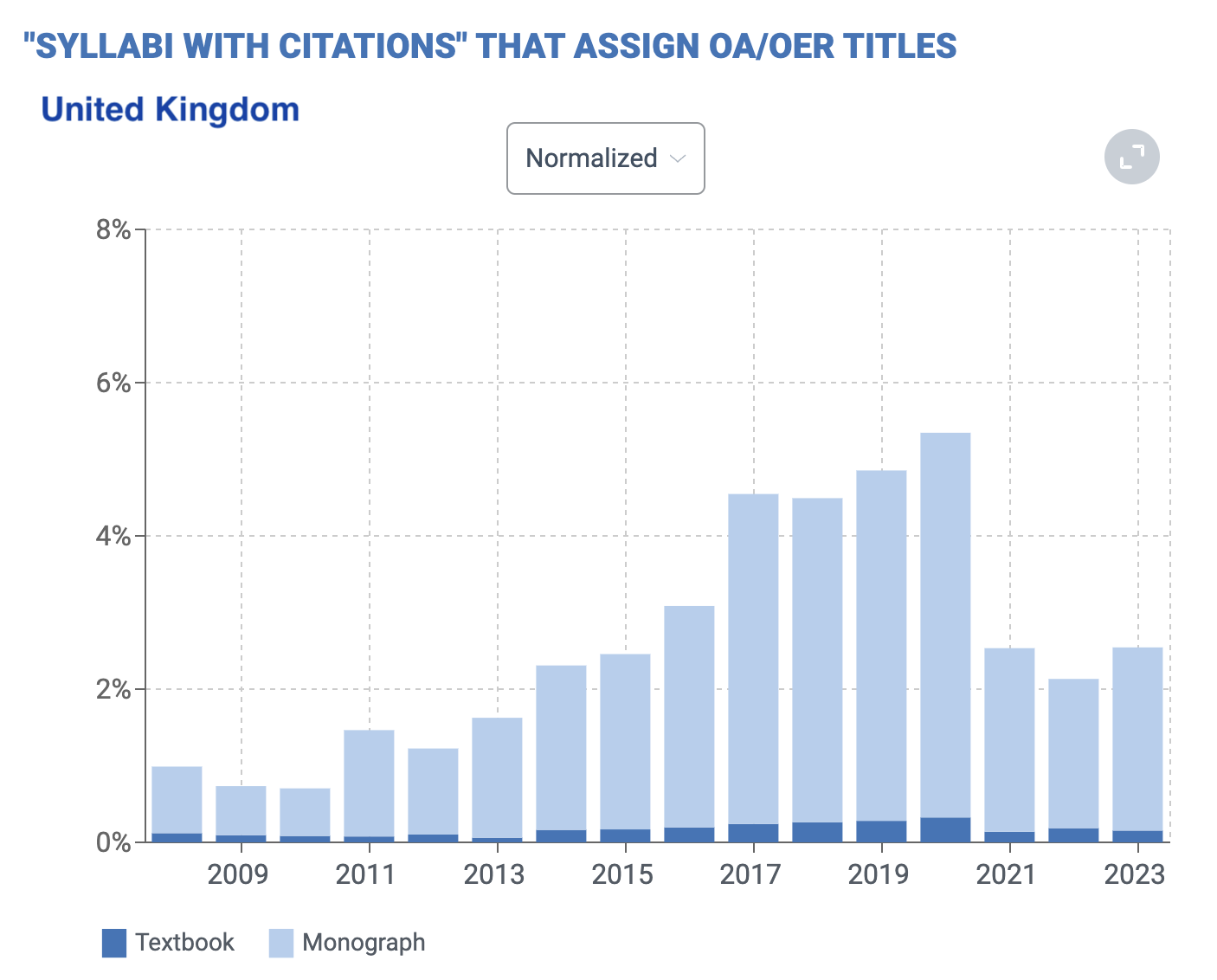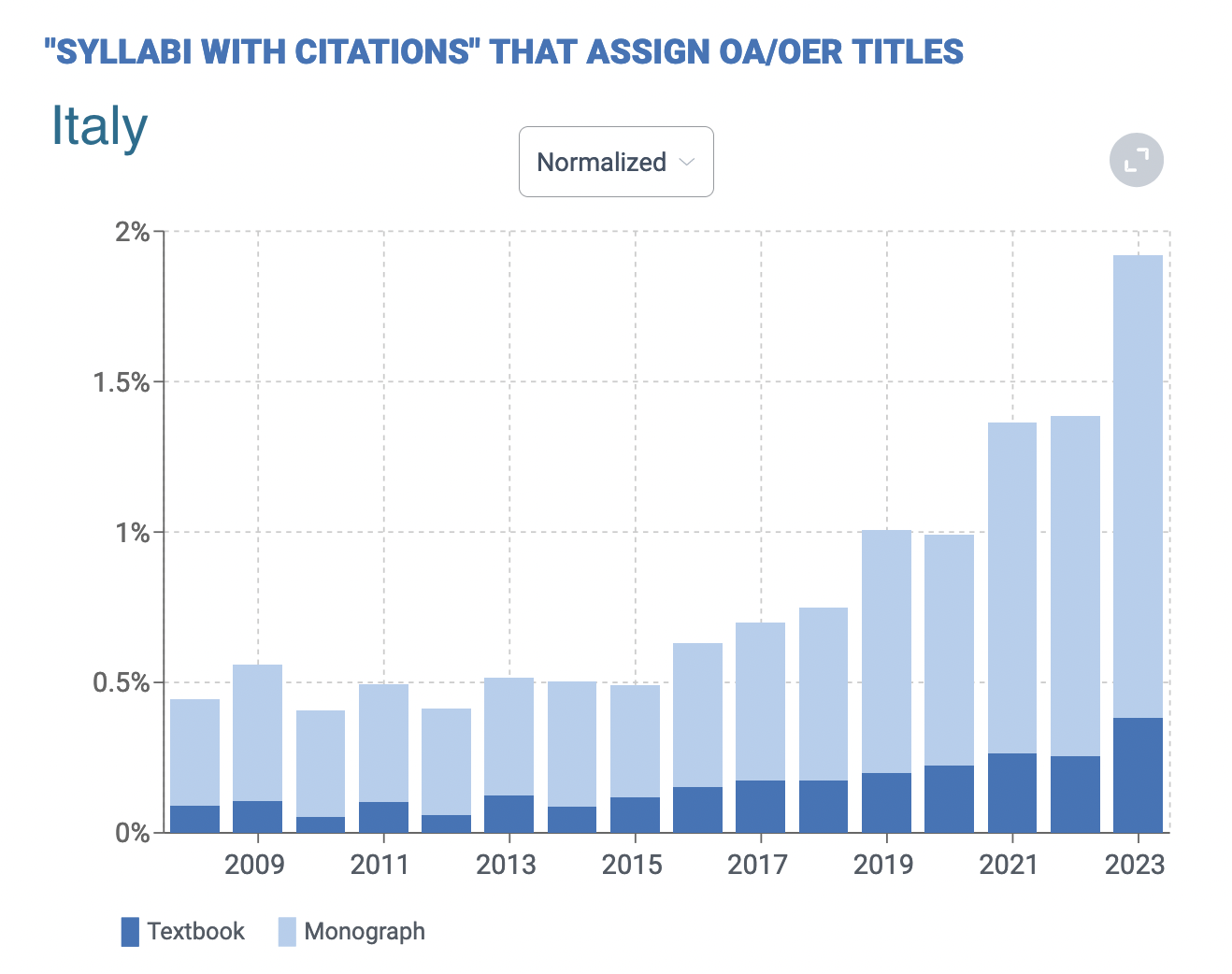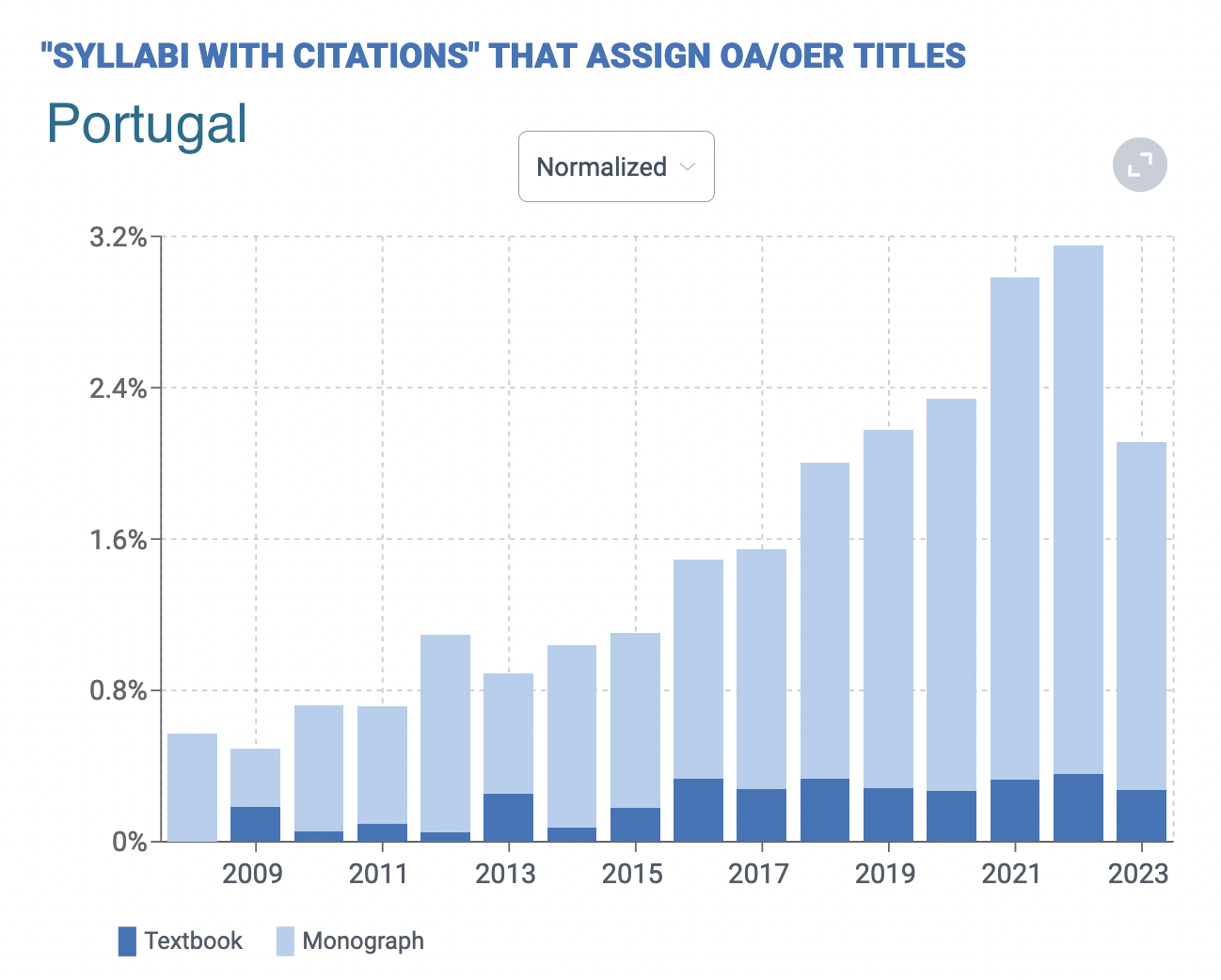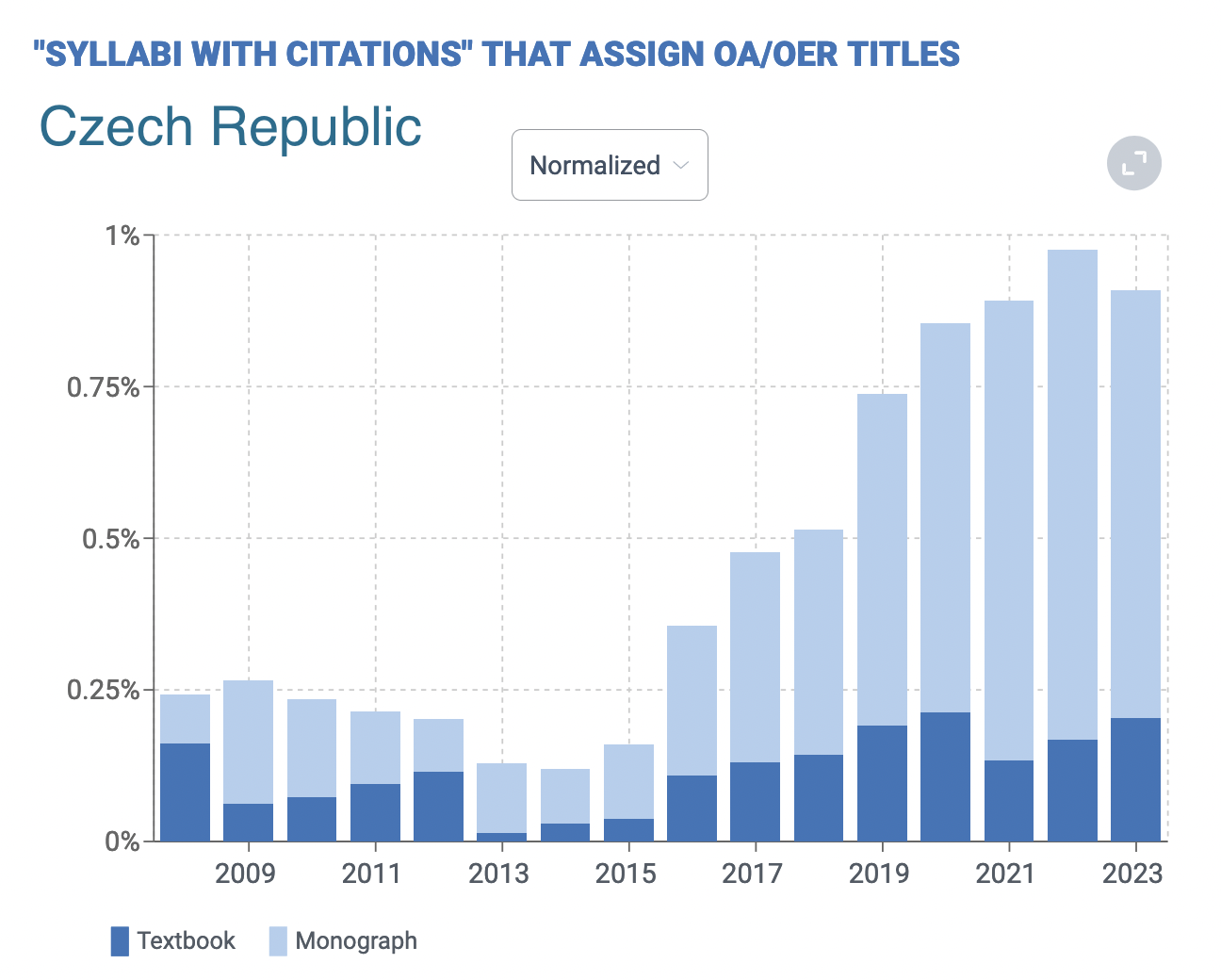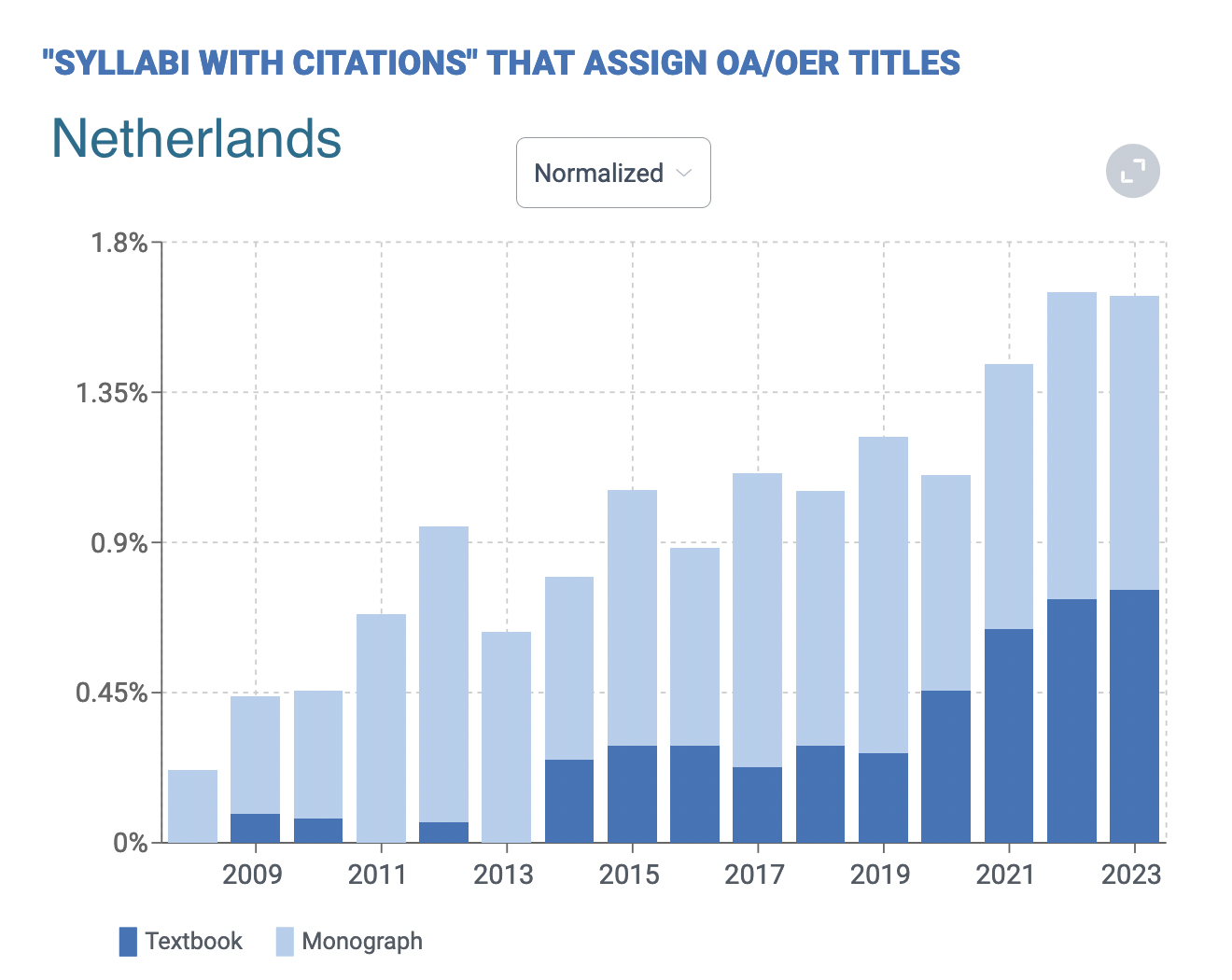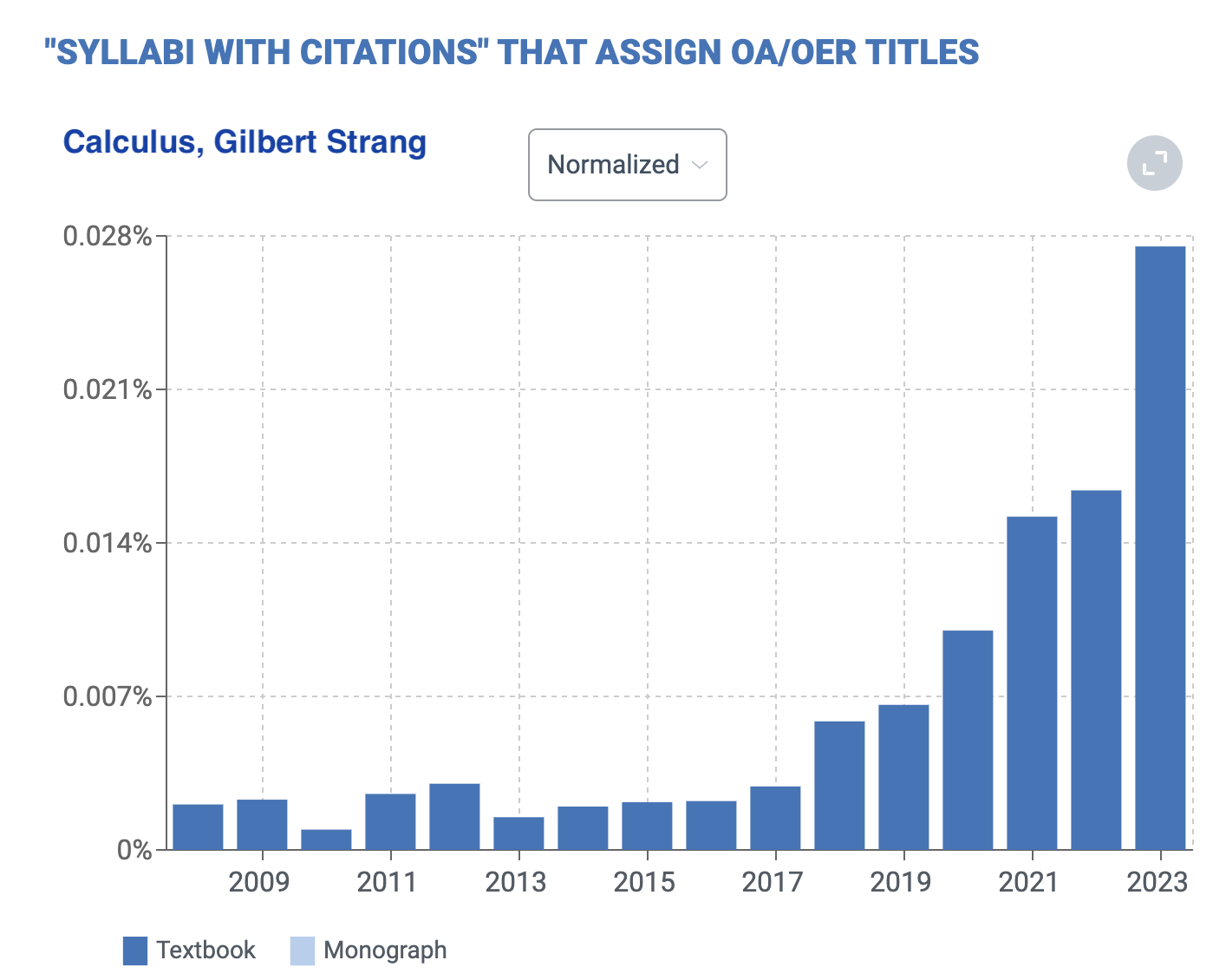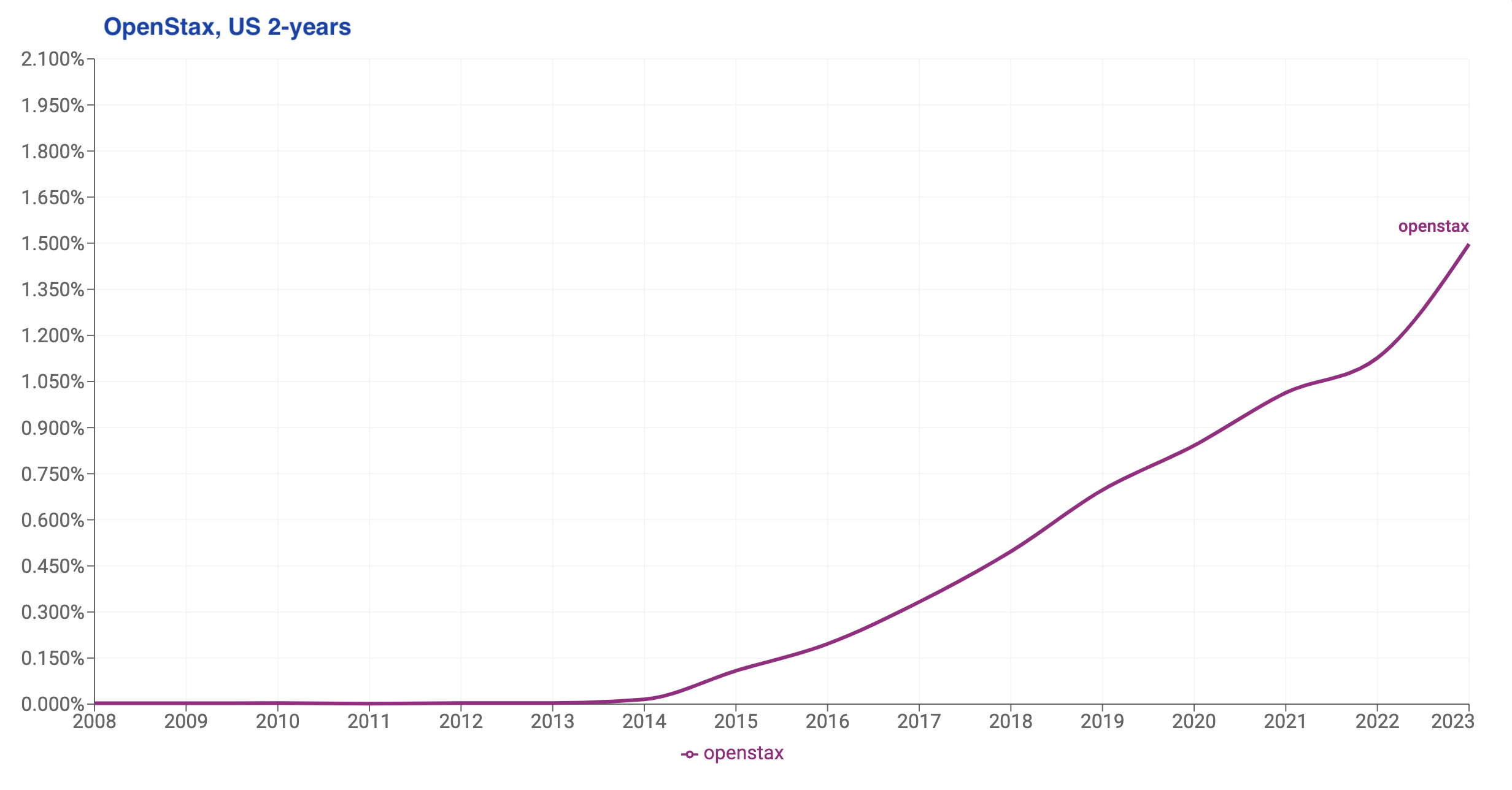The New York Times recently published a list of the '100 Best' books of the 21st Century, drawing on recommendations from authors and critics -- and it is generally excellent. And also completely subjective in the way all best-of lists are, and that's part of the fun.
It got me wondering what the analogous '100 Most Frequently Taught' books of the 21st century would look like if one removed the primarily 'instructional' genres that crowd the top ranks in Open Syllabus Analytics -- the textbooks, reference guides, readers, introductions to X, and similar titles. So that's what I've tried to do here.
Let's start by noting that 'Most Frequently Taught' does not mean 'Best,' nor is it a stamp of approval of the author or the ideas. A title can serve multiple pedagogical purposes, including exposure to work that is, for better or for worse, 'influential.' But I think it's fairly easy to see when the selection of a contemporary title, especially, does appear to reflect a judgement about what's best to illustrate an argument, introduce a perspective, or illuminate a topic.
You have to go pretty far down the title ranks in Analytics to identify 100 titles that (1) aren't in those pedagogical categories above; and (2) were published after 1999. 2600 titles specifically. And you learn a few things when you do.
First, the corpus of teaching titles is old. There are very few widely-used titles published in this century. The approach for most instructional materials is to continuously update titles published -- often -- decades ago. And the most successful textbooks are no longer books so much as brands or product lines. Pedagogically, higher ed is very conservative.
Second, the results cluster around a few topics: globalization and economic development, leadership and management, cognitive science, new media, and science writing are the largest categories. I think that reflects three conditions for appearing in the top ranks: large fields do better than small fields -- e.g., business, economics, psychology, and political science over religion or anthropology or classics; fields that assign books (rather than textbooks) to undergrads do better than fields that don't, so very little STEM presence; and fields that track and develop new ideas around contemporary events have a stronger appetite for new titles. It would be possible to continue down the ranks and identify, for example, the top 100 assigned contemporary novels but in practice the literature side of English is a fairly small and mostly historical field and contemporary fiction is a niche within it. Only a few literary titles appear near the top.
So this is not a literary best list, but arguably best for learning something important about the topics that have clustered at the top of the ranks, and best for understanding books that have become influential in thinking about those topics. The overlap with the NYT list is small, but does feature a few rapidly canonized literary titles. I've indicated the overlapping titles with a smiley. And since I was enjoying this excercise I extended the ranking a bit to 116. So you get more best books from Open Syllabus than from the NYT.
The links go to title and author profile pages in Open Syllabus Analytics. You can sign up for free to explore the full data.
- Leading Change, John P. Kotter
- Thinking, Fast and Slow, Daniel Kahneman
- Bowling Alone: The Collapse and Revival of American Community, Robert D. Putnam
- Development as Freedom, Amartya Sen
- Convergence Culture: Where Old and New Media Collide, Henry Jenkins
- 😀 The New Jim Crow, Michelle Alexander
- The Language of New Media, Lev Manovich
- Globalization and Its Discontents, Joseph E. Stiglitz
- The Spirit Level: Why Greater Equality Makes Societies Stronger, Richard G. Wilkinson
- Good to Great, Jim Collins
- 😀 Persepolis, Marjane Satrapi
- A Brief History of Neoliberalism, David Harvey
- Courageous Faith: Life Lessons From Old Testament Heroes, Edward E. Hindson
- Blue Ocean Strategy: How to Create Uncontested Market Space and Make the Competition Irrelevant, W. Chan Kim, Renee Mauborgne
- The Lean Startup, Eric Ries
- 😀 Nickel and Dimed: On (Not) Getting by in America, Barbara Ehrenreich
- The World Is Flat: A Brief History of the Twenty-First Century, Thomas L. Friedman
- Influence, Robert B. Cialdini
- The Tipping Point: How Little Things Can Make a Big Difference, Malcolm Gladwell
- Eats, Shoots and Leaves, Lynne Truss
- 😀 Fun Home: A Family Tragicomic, Alison Bechdel
- On Writing: A Memoir of the Craft, Stephen King
- The Tragedy of Great Power Politics, John J. Mearsheimer
- The End of Poverty: Economic Possibilities for Our Time, Jeffrey D. Sachs
- Outliers: The Story of Success, Malcolm Gladwell
- The Rise of the Creative Class, Richard L. Florida
- Modernity at Large: Cultural Dimensions of Globalization, Arjun Appadurai
- Collapse: How Societies Choose to Fail or Succeed, Jared Diamond
- The Five Dysfunctions of a Team: A Leadership Fable, Patrick Lencioni
- The Immortal Life of Henrietta Lacks, Rebecca Skloot
- Capital in the Twenty-First Century, Thomas Piketty
- Poor Economics: A Radical Rethinking of the Way to Fight Global Poverty, Abhijit Banerjee, Esther Duflo
- Why Nations Fail: The Origins of Power, Prosperity and Poverty, Daron Acemoğlu, James A. Robinson
- Globalization, Manfred B. Steger
- Fast Food Nation: The Dark Side of the All-American Meal, Eric Schlosser
- 😀 Between the World and Me, Ta-Nehisi Coates
- 😀 Postwar: A History of Europe Since 1945, Tony Judt
- Every Good Endeavor: Connecting Your Work to God's Work, Timothy J. Keller
- Alone Together: Why We Expect More From Technology and Less From Each Other, Sherry Turkle
- Empire, Michael Hardt, Toni Negri
- Justice, Michael J. Sandel
- Postcolonialism: An Historical Introduction, Robert Young
- Change by Design: How Design Thinking Transforms Organizations and Inspires Innovation, Tim Brown
- The Art of Game Design: A Book of Lenses, Jesse Schell
- Bird by Bird: Some Instructions on Writing and Life, Anne Lamott
- Predictably Irrational: The Hidden Forces That Shape Our Decisions, Dan Ariely
- The Culture of Control, David Garland
- Freakonomics: A Rogue Economist Explores the Hidden Side of Everything, Steven D. Levitt
- A History of the Modern Middle East, William L. Cleveland
- Strategy: An International Perspective, Bob De Wit
- The Omnivore's Dilemma: A Natural History of Four Meals, Michael Pollan
- Planet of Slums, Mike Davis
- Reassembling the Social, Bruno Latour
- Provincializing Europe: Postcolonial Thought and Historical Difference, Dipesh Chakrabarty
- The Wealth of Networks: How Social Production Transforms Markets and Freedom, Yochai Benkler
- 😀 Citizen: An American Lyric, Claudia Rankine
- The Curious Incident of the Dog in the Night-Time, Mark Haddon
- This Changes Everything: Capitalism vs. The Climate, Naomi Klein
- Emotional Design: Why We Love (Or Hate) Everyday Things, Donald A. Norman
- 😀 Never Let Me Go, Kazuo Ishiguro
- Free Culture, Lawrence Lessig
- 😀 The Road, Cormac McCarthy
- The Hunger Games, Suzanne Collins
- The Absolutely True Diary of a Part-Time Indian, Sherman Alexie
- 😀 White Teeth: A Novel, Zadie Smith
- The Shock Doctrine: The Rise of Disaster Capitalism, Naomi Klein
- Cities of Tomorrow, Peter Hall
- The Body Keeps the Score: Brain, Mind, and Body in the Healing of Trauma, Bessel A. Van Der Kolk
- Undoing Gender, Judith Butler
- 😀 The Brief Wondrous Life of Oscar Wao, Junot Díaz
- The Globalization Paradox, Dani Rodrik
- 😀The Emperor of All Maladies: A Biography of Cancer, Siddhartha Mukherjee
- Long Tail: Why the Future of Business Is Selling Less of More, Chris Anderson
- The Global Cold War: Third World Interventions and the Making of Our Times, Odd Arne Westad
- Vibrant Matter: A Political Ecology of Things, Jane Bennett
- The Education Debate, Stephen J. Ball
- Cold War: A New History, John Lewis Gaddis
- The Great Divergence: China, Europe, and the Making of the Modern World Economy, Kenneth Pomeranz
- Making Globalization Work, Joseph E. Stiglitz
- Precarious Life: The Powers of Mourning and Violence, Judith Butler
- Bad Science: Quacks, Hacks, and Big Pharma Flacks, Ben Goldacre
- Chavs: The Demonization of the Working Class, Owen Peter Jones
- Why Love Matters: How Affection Shapes a Baby's Brain, Sue Gerhardt
- Born in Blood and Fire: A Concise History of Latin America, John Charles Chasteen
- In Defense of Globalization, Jagdish N. Bhagwati
- Prosperity Without Growth: Economics for a Finite Planet, Tim Jackson
- Kicking Away the Ladder: Development Strategy in Historical Perspective, Ha‐Joon Chang
- Pathologies of Power, Paul Farmer
- The Gene: An Intimate History, Siddhartha Mukherjee
- Politics of Piety: The Islamic Revival and the Feminist Subject, Saba Mahmood
- Impossible Subjects, Mae M. Ngai
- Non-Places: Introduction to an Anthropology of Supermodernity, Marc Auge
- A Theory of the Firm: Governance, Residual Claims, and Organizational Forms, Michael C. Jensen
- Created Equal, Jacqueline Jones
- The Precariat: The New Dangerous Class, Guy Standing
- The Kite Runner, Khaled Hosseini
- What Money Can't Buy: The Moral Limits of Markets, Michael J. Sandel
- The Art of Looking Sideways, Alan Fletcher
- The Birth of the Modern World, 1780-1914: Global Connections and Comparisons, C. A. Bayly
- Global Political Economy: Understanding the International Economic Order, Robert Gilpin
- This Time Is Different: Eight Centuries of Financial Folly, Carmen Reinhart, Kenneth Rogoff
- A Modern History of Japan: From Tokugawa Times to the Present, Andrew Gordon
- Global Governance and the New Wars: The Merging of Development and Security, Mark Duffield
- The Economics of Climate Change, N. H. Stern
- Drive: The Surprising Truth About What Motivates Us, Daniel H. Pink
- Craftsman, Richard Sennett
- Postdramatic Theatre, Hans-Thies Lehmann
- The Stripping of the Altars: Traditional Religion in England, C.1400-C.1580, Eamon Duffy
- Natural Capitalism: Creating the Next Industrial Revolution, Paul Hawken, Amory B. Lovins, L. Hunter Lovins
- Dude, You're a Fag: Masculinity and Sexuality in High School, C. J. Pascoe
- Digital Art, Christiane Paul
- Into the Woods, John Yorke
- Networks of Outrage and Hope: Social Movements in the Internet Age, Manuel Castells
- The Politics of the Environment: Ideas, Activism, Policy, Neil Carter
- Place, Tim Cresswell
- A Problem From Hell: America and the Age of Genocide, Samantha Power
*** Updated to remove a couple mistakenly included older books and articles


